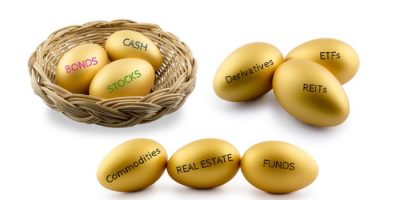
A slowdown in private investment in China in May overshadowed other, more-upbeat economic data, contributing to a 3.2% drop in Shanghai shares and fueling concerns that growth in the second quarter could be weaker than in the first.
Several reports released Monday suggested pockets of relative strength in the world’s second-largest economy. But fixed-asset investment expanded by a weaker-than-expected annual clip of 9.6% in the first five months of the year, compared with 10.5% growth through April. Even worse, the private investment portion grew by a mere 3.9% in January-May, down from an already weak 5.2% in January-April.
A slowdown in private investment is particularly worrisome because it indicates that companies are holding off spending, signaling limited confidence in the future and denying the economy what is often more effective and sustainable investment than government spending.
Sheng Laiyun, a spokesman with the country’s National Bureau of Statistics, cited overcapacity and a difficulty in obtaining financing as reasons private companies are reluctant to invest, though he said China’s economic fundamentals remain sound. “The slowdown in private investment shows that economic growth momentum needs to be strengthened,” he said.
ENLARGE
The weak investment data coincided with reports showing property and auto sales still going strong, illustrating the mixed picture in China’s economy, with the industrial sector struggling while consumption has remained a bright spot. May retail spending held up, despite the prospect of smaller wage increases this year and growing concern over unemployment,
“If you look at all the data from May, you can pick and choose and find industries doing well,” said IHS economist Brian Jackson. “But if you’re concerned about GDP, the figures from April and May pretty much show the economy will slow down from the 6.7% seen in the first quarter.”
China’s property market continued to strengthen, though at a slower pace than earlier in the year. Housing sales grew 53.4% by value in the first five months of 2016 compared with 61.4% in the first four months as larger cities tightened sales restrictions to rein in overheating property prices. The deceleration suggests the market has peaked. “That should cap growth momentum going forward,” said Royal Bank of Scotland economist Harrison Hu.
Despite recent strong property sales, Oriental Furniture Co., which makes marble tables and flooring at its factory in Songyuan, a city in northeastern China, said sales have been weak and it doesn’t expect to invest much in 2016 given the tepid outlook. Gao Junming, the company’s general manager, said he is looking at new product lines and more government stimulus to boost the company’s prospects. “Hopefully that will allow us to sell more,” he said.
Employees work at an electronics factory in central China’s Hubei province. Mixed data out Monday pointed to a further slowdown in economic growth in China. ENLARGE
Employees work at an electronics factory in central China’s Hubei province. Mixed data out Monday pointed to a further slowdown in economic growth in China. PHOTO: REUTERS
And while growth in auto sales hit a five-month high, inventory levels were precariously high and auto makers remained cautious in anticipation of a continued economic slowdown. They produced 5.5% more cars in China in May compared with the year-earlier period, even though sales rose 11% over the same period of 2015.
Consumer confidence in China edged down in May over April, according to the ANZ-Roy Morgan China Consumer Confidence Index, with fewer respondents expecting their personal financial situation to improve in the immediate future.
The weak May investment data increased the chance that Beijing will take more steps to revive the economy—including ramped-up infrastructure spending and a possible cut in the reserves that banks are required to keep—to ensure it hits its 2016 growth target of 6.5% to 7%.
“Private investment is difficult to boost very quickly, so the response will have to be largely from the government spending side,” said Standard Chartered (Hong Kong) Ltd. economist Ding Shuang. One factor constraining monetary policy, he added: the prospect of a U.S. rate rise later in 2016.
Beijing has already injected record amounts of credit and boosted government spending. On Monday, the finance ministry said fiscal spending rose 17.6% in May from a year earlier, a sharp jump from April’s 4.5% pace and well above the government’s 6.7% fiscal spending target for this year.
Monday’s data also underscore the limits of traditional debt-fueled stimulus in countering deeply rooted problems. China’s total debt has increased to the equivalent of about 225% of its gross domestic product, up from 160% in 2007, the International Monetary Fund said Saturday. The IMF singled out China’s soaring levels of corporate debt as a serious and worsening problem that could pose a systemic risk to the global economy.
China attracted $8.89 billion in foreign direct investment in May, down 1% from a year earlier, the Commerce Ministry said Sunday, with investors increasingly less interested in the manufacturing sector. In the first five months of 2016, some 70% of FDI went into service industries.
In a bid to prop up manufacturing, Beijing announced in late May plans to boost factory innovation and support the shipbuilding, advanced equipment and general aviation industries.


